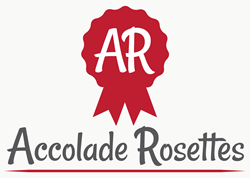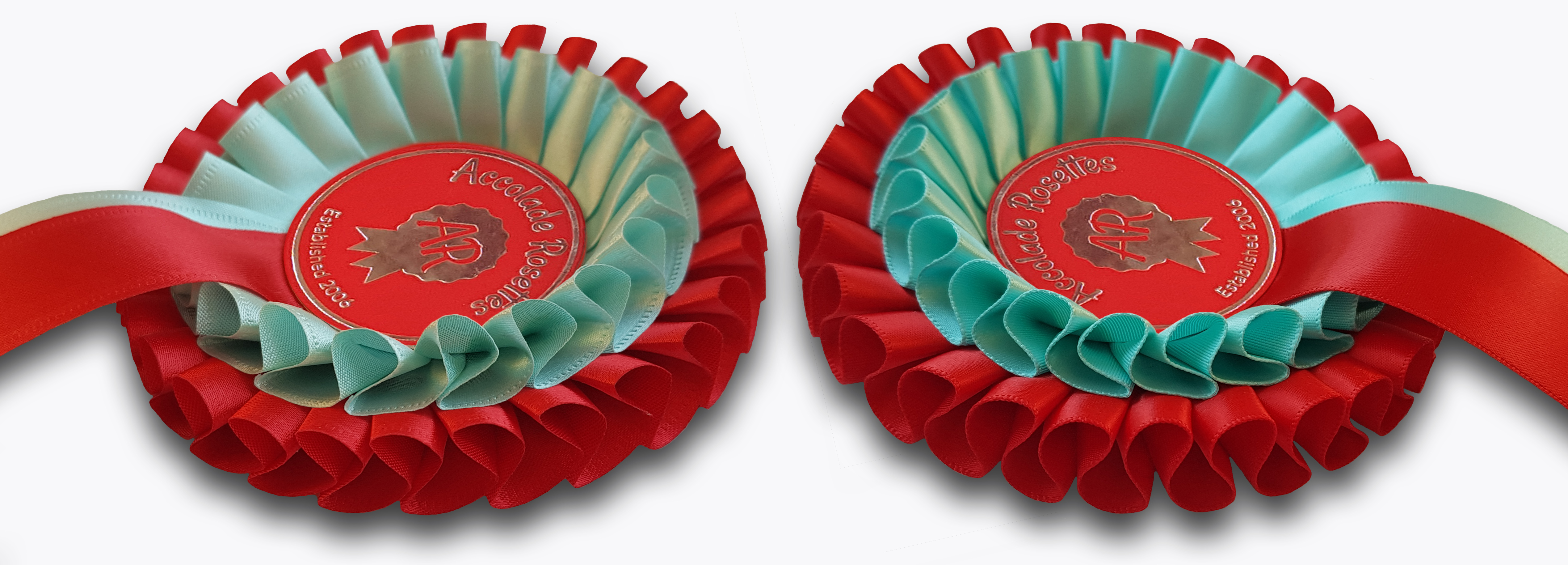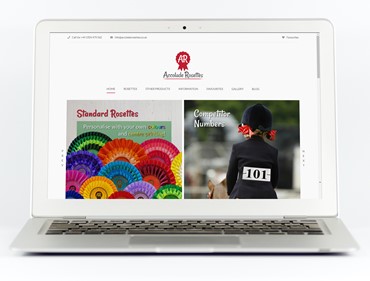Standard Ribbon vs Luxury Ribbon
The choice is yours!
We use two main types of ribbon here at Accolade Rosettes; “Standard Ribbon” and “Luxury Ribbon”. Most rosette manufacturers tend to favour one or the other but we like to make our lives difficult offer our customers a choice!
In this post I'll explain the main differences that might help you decide which is best for you.
|
Standard Ribbon |
Luxury Ribbon |
|
|
Acetate Satin |
Polyester Satin |
|
|
Slit & Embossed |
Woven |
|
|
35 Colours |
40 Colours |
|
|
97gms* |
212gms* |
|
|
No |
Yes |
|
|
Included |
Extra |
Why do we offer both?
Way back in 2006 when we first started out there was really only one type of satin ribbon in the game and that was the acetate satin we now refer to as our Standard Ribbon. The only real choice to rosette manufacturers at the time was whether the edge was plain or embossed (we went with embossed because we like nice things). Of course woven polyester satin was around, but at the time the price was too high to make it an option for use in rosette manufacture.
Over time the price gap between acetate satin and polyester satin ribbon has narrowed and this, along with the introduction of digital ribbon printers, has led to more rosette companies using polyester ribbon exclusively; this is what we refer to as our Luxury Ribbon.
However, we’re still happy to leave the choice to our customers for the time being!
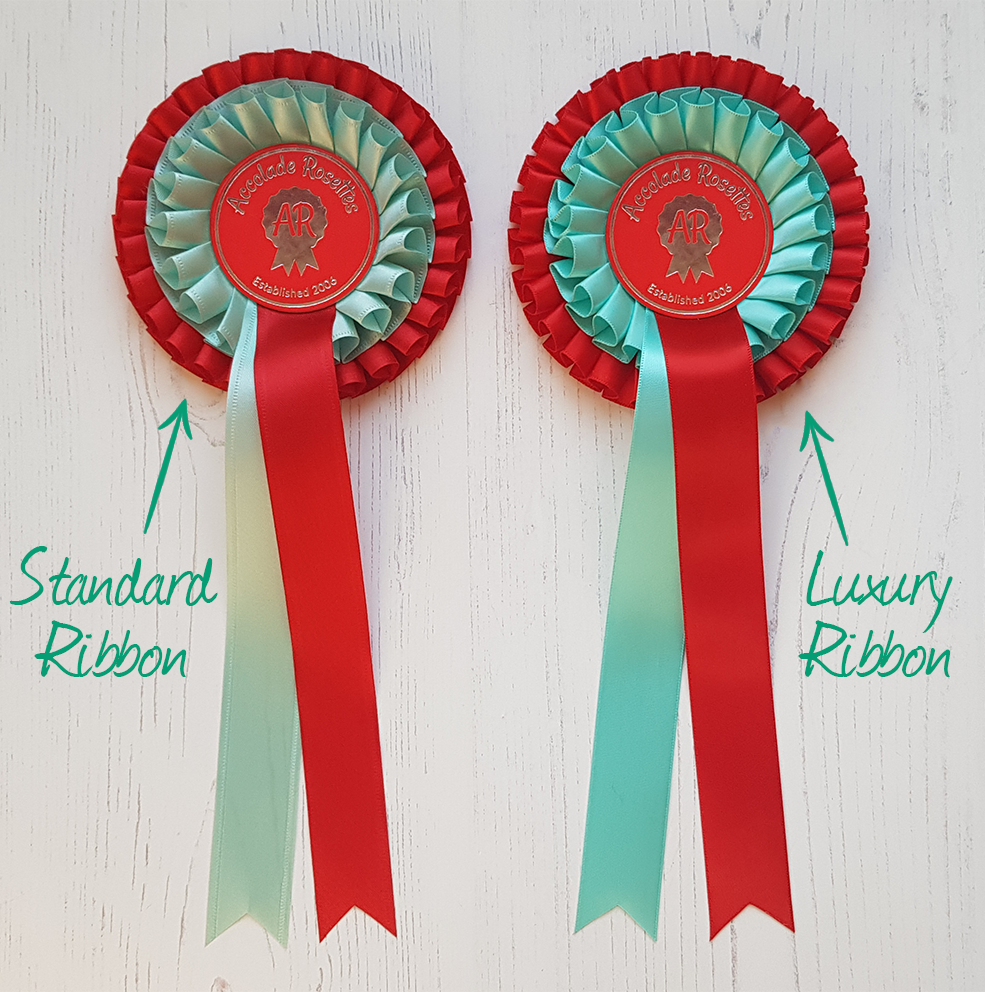
Spot the difference: two F502 rosettes; one made using our Standard Ribbon and the other made using our Luxury Ribbon
Both are satin!
You’ll notice that both ribbons are described as being satin – that’s because satin is how the fibres are woven together and not what they’re made of!
The main characteristic of satin fabrics is their glossy surface, satin weave usually produces fabrics that have a clear right and wrong side (shiny and dull) and this is the case with both of these ribbons.
So if you see other companies claim that they “only use satin ribbon, not acetate” now you know that they’re lacking in their ribbon geek credentials!
The 3 Basic Weaves
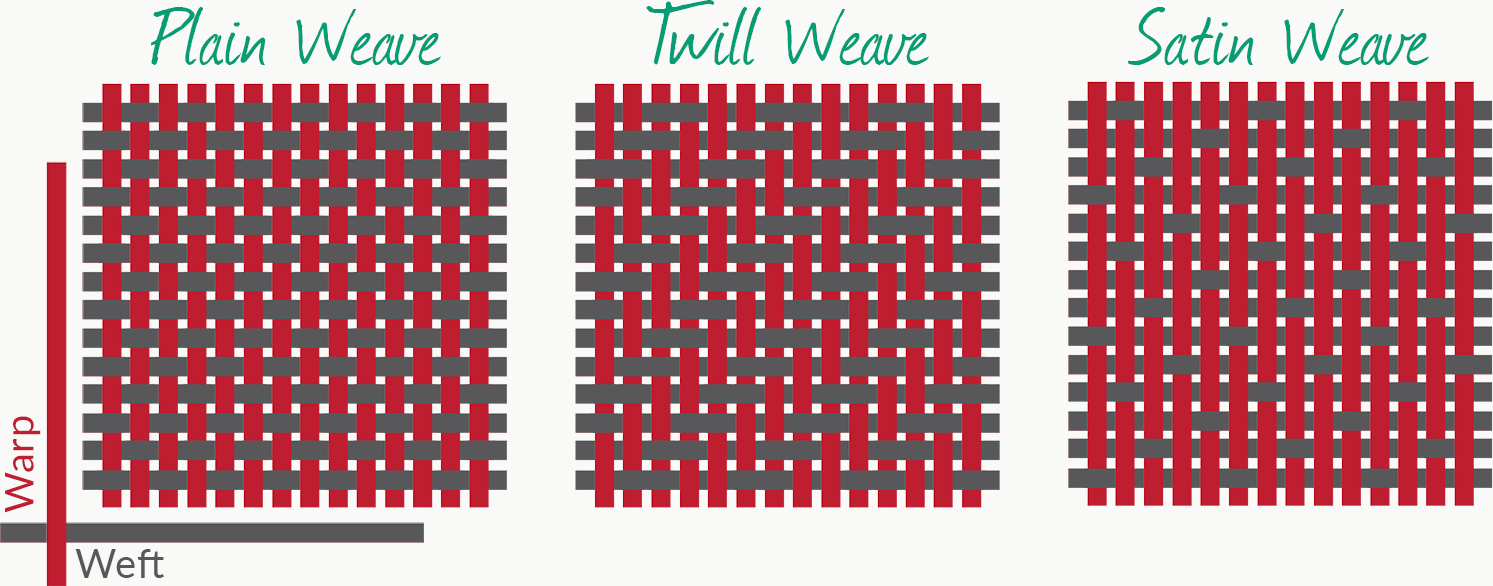
The reduced interlocks and longer space between the weft threads crossing the warp threads is what leaves the smooth, glossy surface that satins are known for.
Acetate
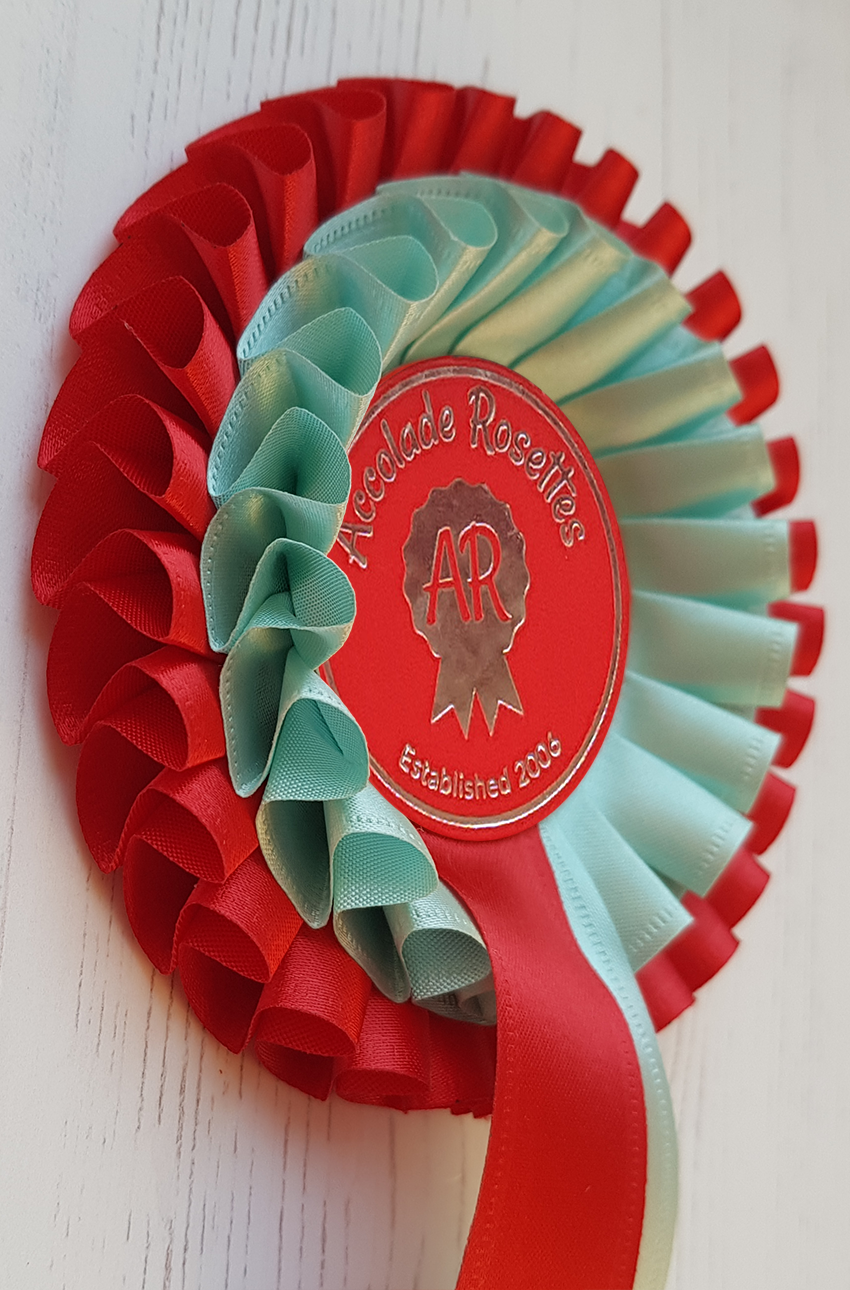
Acetate is made using wood pulp (hooray renewable!) and acetic acids (eww, chemicals) and is therefore classified as being a semi-synthetic material. First developed for use as a fabric in the U.S. in 1924, the process that creates acetate fibres involves the cellulose (plant cells) being exposed to acetic acid, acetic anhydride and sulfuric acid to produce cellulose acetate which is then dissolved into acetone before being passed through spinnerets (special shower heads rather than those in spider bums!) that create fine fibres as the solvents evaporate.
The properties of acetate satin that make it ideal for use in rosette manufacture are:
-
- Appearance – the satin weave further accentuates the natural lustre of the acetate fibre
- The great range of shades available are colourfast
- Low static
- Resistant to mould and mildew
- Hypoallergenic
- Holds a crease like a boss – perfect for pleating!
The drawbacks of acetate satin:
-
- Can tear easily if mishandled
- Holds a crease like a boss – not perfect for tails!
Polyester
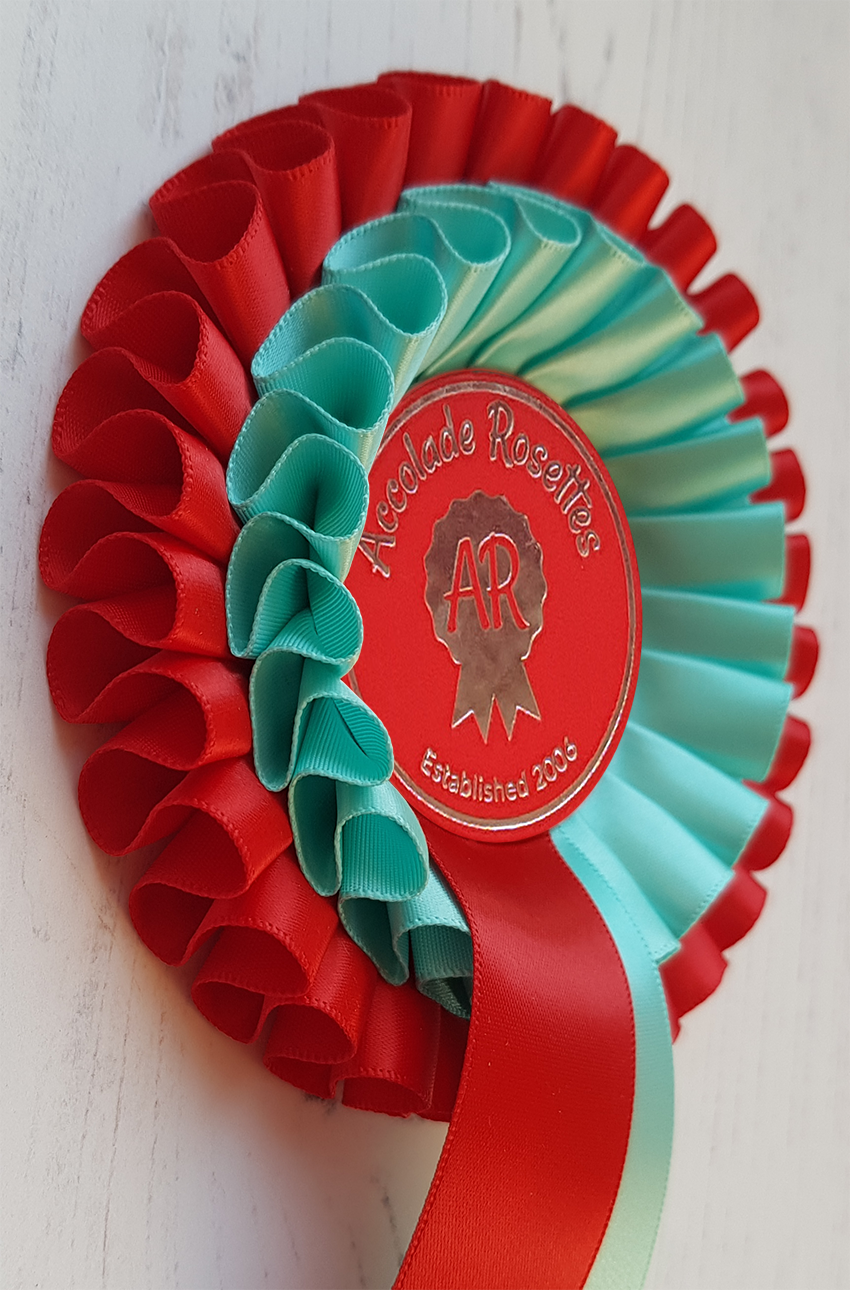
Polyester is a synthetic man-made polymer produced by mixing ethylene glycol and terephthalic acid which actually makes it a type of plastic! Early work on the development began in the U.S. (this work is what produced Nylon) but it was British scientists who ultimately patented polyethylene terephthalate (polyester’s proper name) or PET (cool name) in 1941.
The properties of polyester satin that make it ideal for use in rosette manufacture are:
-
- The colours - it holds dye very well so the wide range of rich colours don’t fade
- Durable
- Stain resistant
- Shape retention – good for pleating
- Crease resistant – excellent for tails!
The drawbacks of polyester satin:
-
- Prone to static – rosettes like to grab dust/pet hairs/glue/the bags when we’re trying to pack them!
Edges
One of the most noticeable differences between our Standard and Luxury Ribbon is how the edges are finished.
The manufacturing process of our Standard Ribbon involves producing wide sheets of fabric which are then cut/slit to the required width of the ribbon. The edges are heat sealed and the range we use is also embossed (has a neat patterned pressed along the edge)
Our Luxury Ribbon on the other hand has a true woven edge as it is made to that specific width in the manufacturing process.
Please note that although these edge characteristics can be used to tell the difference between our ribbon ranges they can not be used to identify a type of ribbon in general; polyester ribbon can also have a slit edge.
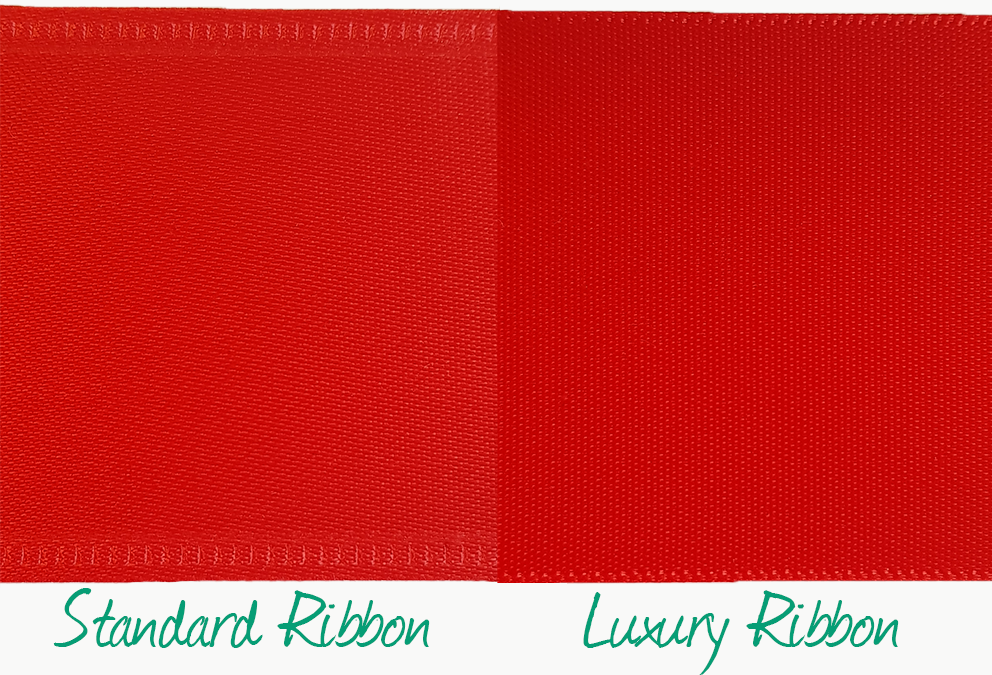
Colour Range
In 2014 when we first introduced the option of Luxury Ribbon the colour range was more limited and we found that quite restrictive (this was a major reason that we didn’t want to switch to this ribbon completely). However, as the range of colours available of this ribbon has increased and improved the colour range of our original, Standard Ribbon has actually decreased slightly so now the opposite is true and the Luxury Ribbon offers a wider range of colours to choose from!
Check out our Colour Charts to compare the ranges.
Standard Ribbon Colours

Luxury Ribbon Colours

Weight
*Disclaimer: The manufacturer’s specification sheets show different units for this property so my calculation for the Luxury Ribbon may not be exact (the figure is also +/-5%) …
The important thing to note is that the Luxury Ribbon is heavier than the Standard Ribbon! In person it is easy to see and feel that the Luxury Ribbon is physically thicker and I can also reveal that the Luxury Ribbon blunts scissors and needles more quickly as a result! The difference in the weight of rosettes once packed is also significant which can impact on delivery costs when weight rather than volume dictates the price.
Printing
Though I, with only my human sight and touch, am unable to detect that our Luxury Ribbon has a significantly smoother surface than our Standard alternative our digital ribbon printer assures me that this is the case and for this reason absolutely refuses to print nicely onto any of our Standard Ribbon. Sad faces all round.
More information on printing rosette tails and sashes can be found on our printing page.
Price
The use of Standard Ribbon is included in the price of all our rosettes. There is an extra charge for the use of Luxury Ribbon as it is a little more expensive for us to buy, to work with and to post (see Weight section above!).
The exact price to have any of our Standard or Premium Rosettes made with Luxury Ribbon can be found in the "Luxury Ribbon" tab on the individual product pages.
Some of our Premium Rosettes (all of those with names beginning with A) are automatically made using Luxury Ribbon!
Not better, not worse; just different!
I wouldn’t want to say which type of ribbon is “best” as I think it depends on their use. For example, our Stock Rosettes are all made using Standard Ribbon; these rosettes are intended as an economical option for low level events, whereas our A-Line range of Premium Rosettes (those with names beginning with A) are all made with Luxury Ribbon, this is because the structure of their design benefits from the heavier ribbon and also they’re intended for special events and occasions when you would anticipate that the rosette would be treasured and/or displayed for some time and so would benefit from being made from the more durable woven polyester.
I hope this post has been helpful…
… in explaining the differences between our ribbon ranges and that you can now easily decide which type of ribbon is most suitable for your rosettes! However, if you’re still unsure or need further help or information feel free to get in touch.
Thanks for reading,

Sources:
https://www.hunker.com/13411987/what-is-acetate-fabric
https://en.wikipedia.org/wiki/Cellulose_acetate
https://www.contrado.co.uk/blog/what-is-polyester-a-closer-look-into-this-love-it-or-hate-it-fabric/
https://en.wikipedia.org/wiki/Polyester
https://sewport.com/fabrics-directory/polyester-fabric
https://www.heddels.com/2017/12/7-weave-patterns-to-know-twill-basketweave-satin-and-more/
